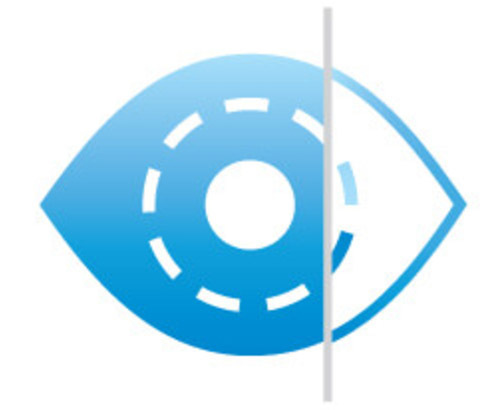
Notre Dame Researchers develop software for potential use by law enforcement
Just like your fingerprints, using the iris of the eye for identification is unique to each individual person, making it just as useful for several forms of security. However, current types of iris identification applications can confirm whether or not two eyes match, but not necessarily why that is. To overcome this issue, Notre Dame researchers have developed software that analyzes iris features, called crypts, for identification and presents them in an easily interpretable way.
This software code was developed by Jianxu Chen, current computer science and engineering graduate student; Patrick Flynn, the Duda Family Professor of Engineering; Danny Chen, professor of computer science and engineering; and Feng Shen, former computer science and engineering graduate student, to make the iris identification process easier for law enforcement to use and, hopefully, apply. The code works by looking at iris features and presenting them to the user in a way that is similar to a program that conducts fingerprint analysis.
“The use of iris recognition, although very accurate, is not currently presented in a way that explains why two eyes match,” said Jianxu Chen. “For example, law enforcement officers know if a fingerprint application works correctly because the system can identify matches in loops and circles in fingerprints. However, iris identification has not been used in this way. Therefore, our software proposes a method that will make the matching process more accessible for those who use it. This way, people can confirm that the identification application worked properly and understand the process.”
Currently, the software is about 96 percent accurate, but the researchers want to make it even better. To do this, the code is currently available as an open source product, or software that has the original source code obtainable for modification and extension. This way, all interested researchers have the opportunity to interact, provide their input, and hopefully develop a more accurate system.
“We are really close to being able to deploy a real product, but we want to improve the software as much as we can,” said Jianxu Chen. “This is why our iris recognition software is available online at the Technology Marketplace. Our goal is to build research collaborations from all over the world to help make the system more practical and more stable in various situations that may be essential if used for forensic purposes.”
This software code is available through Notre Dame’s Tech Transfer Office and their newly opened Technology Marketplace. This online resource provides a growing list of licensed software available for the public to download. To learn more about the Technology Marketplace or the iris recognition system, please visit ott.nd.edu/software-available-for-license/.
Tech Transfer at Notre Dame forms part of the recently announced IDEA Center, which stands for Innovation, Discovery, and Enterprise Acceleration. This transformative new conceptual structure will support a vibrant culture of research, innovation, and commercialization at the University.
Contact:
Tim Joyce / Licensing Associate
IDEA Center / University of Notre Dame
joyce.17@nd.edu / 574.631.3029
ott.nd.edu / ideacenter.nd.edu
About Notre Dame Research:
The University of Notre Dame is a private research and teaching university inspired by its Catholic mission. Located in South Bend, Indiana, its researchers are advancing human understanding through research, scholarship, education, and creative endeavor in order to be a repository for knowledge and a powerful means for doing good in the world. For more information, please see research.nd.edu or @UNDResearch.
